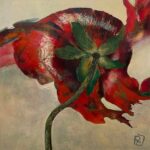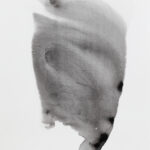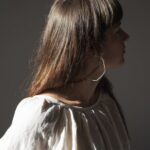Patrick Grisel – “Boredom was born one day of uniformity”*
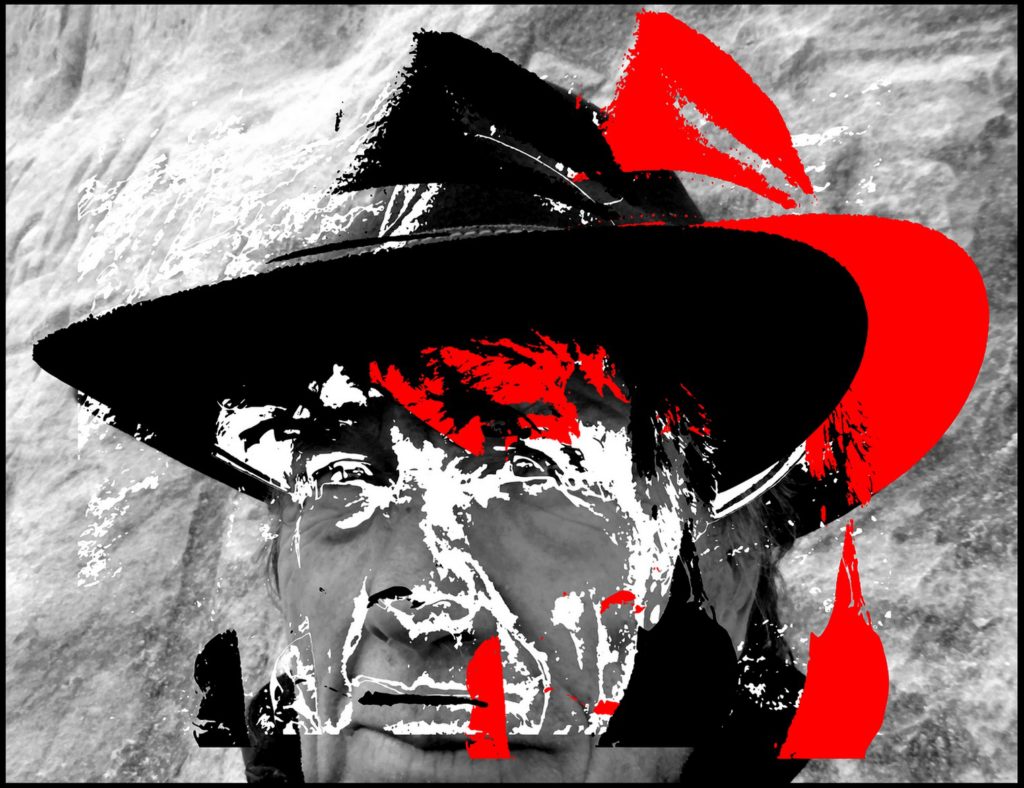
LE POËT LAVAL IN THE 17th CENTURY
The old village of Le Poët Laval that proudly rises on a hilltop just off the road between Montélimar and Dieulefit goes back to the 12th century when it belonged to the Order of the Knights Hospitaller at the times of the Crusades. It is part of an interesting and turbulent piece of history that I will certainly come back to in a later instalment of this blog. However, a few centuries later the village would once again go through a period of considerable upheaval that I wish to briefly recall here.
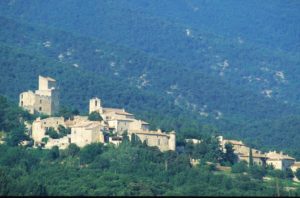
Patrick Grisel, this month’s artist has a second home in Le Poët Laval. He comes from Normandy, “un étranger” (a stranger) as people say around here. He is also a born Catholic. This might have prevented his marriage to Catherine -his wife- who comes from a well-known Protestant family in the region, had they met 500 years earlier when the Edict of Nantes was revoked in 1685 by the all powerful Sun King, King Louis XIV. Having done so less than a century after it had been promulgated the monarch triggered off a new wave of persecutions against the Calvinist Protestants of France who made up a large portion of the population of the Drôme (at the time the Department did not exist and was part of the Province du Dauphiné, a much larger entity). The ruins of castles belonging to feudal lords who had refused to convert to Catholicism are still visible all over the countryside, Protestant churches were destroyed, not to forget the dragonnades , the mounted infantry that harassed and abused ordinary inhabitants, and burned and stole their possessions. The treaty that had been signed to mark the end of the long-running Religious Wars during the second half of the preceding century granted among other concessions, freedom of worship to Protestants, the Huguenots. Now, large numbers fled to other countries. Those who left went to Switzerland, Germany, The Netherlands, England, taking especially mapped out routes to keep them out of reach of those who pursued them. The starting point of one of these routes, “le chemin des Huguenots,” that is about 1600 km long and goes all the way to the Protestant church of Karlshafen in Germany was the Poët Laval Protestant church. The church somehow escaped the attention of the King’s soldiers and is one of the three in France to have been miraculously spared. It has now become le Musée du protestantisme du Dauphiné. Inside, visitors can literally get the feel of what it must have been like when the faithful filled its benches, the pastor delivered his sermon and the congregation sang psalms.
A few thoughts ahead of this blog post
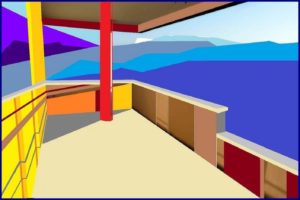 The normal run of artists is either painters, sculptors, writers, musicians who practice one single form of art. Painters also normally adopt a specific style; they make abstract works to the exclusion of any other form, or they make figurative art. If they are fortunate enough to make a name for themselves, they will be recognised for their particular style and if a representational artist happens to make abstract works suspicion will arise as to whether he can be taken seriously. This expectation that an artist can only make one sort of art seems to have grown, as prevailing fashions now have a much larger spread than they ever had before. Whether we like it or not, sameness in the world we live in has become the norm. And, it also applies to art. There was a time not so many years ago when painting landscapes or still-lives were shunned by the major art schools. Life drawing classes were dropped, and students were directed to make conceptual works as though this was the only way to originality. And so (I speak for the art world in Holland I am familiar with, but I know it was widespread) many artists felt the obligation to turn out one non-realistic work after the other, mostly of mediocre quality because it was going against the grain of their personal talent. The money-making art world wasn’t making things easier for them as buyers needed to be reassured that the trendy work they had fallen for was authentic and innovating. I realise I am overstating things, but I am doing so to make a point. To be compelled to produce only one sort of work is not in my opinion a guaranty for creativity and even less for originality. We know that some of the great masters of the Renaissance were at the same time painters, sculptors, architects, poets and inventors. The reason in a nutshell is simply that they were creative spirits. Why should it be different today? That is why I wish to include an artist I know, in my blog who is independent and refuses to restrict himself to one single means of expression. In fact, he multiplies them. In times of too much uniformity I consider this to be a big and deep breath of fresh air.
The normal run of artists is either painters, sculptors, writers, musicians who practice one single form of art. Painters also normally adopt a specific style; they make abstract works to the exclusion of any other form, or they make figurative art. If they are fortunate enough to make a name for themselves, they will be recognised for their particular style and if a representational artist happens to make abstract works suspicion will arise as to whether he can be taken seriously. This expectation that an artist can only make one sort of art seems to have grown, as prevailing fashions now have a much larger spread than they ever had before. Whether we like it or not, sameness in the world we live in has become the norm. And, it also applies to art. There was a time not so many years ago when painting landscapes or still-lives were shunned by the major art schools. Life drawing classes were dropped, and students were directed to make conceptual works as though this was the only way to originality. And so (I speak for the art world in Holland I am familiar with, but I know it was widespread) many artists felt the obligation to turn out one non-realistic work after the other, mostly of mediocre quality because it was going against the grain of their personal talent. The money-making art world wasn’t making things easier for them as buyers needed to be reassured that the trendy work they had fallen for was authentic and innovating. I realise I am overstating things, but I am doing so to make a point. To be compelled to produce only one sort of work is not in my opinion a guaranty for creativity and even less for originality. We know that some of the great masters of the Renaissance were at the same time painters, sculptors, architects, poets and inventors. The reason in a nutshell is simply that they were creative spirits. Why should it be different today? That is why I wish to include an artist I know, in my blog who is independent and refuses to restrict himself to one single means of expression. In fact, he multiplies them. In times of too much uniformity I consider this to be a big and deep breath of fresh air.
PATRICK GRISEL
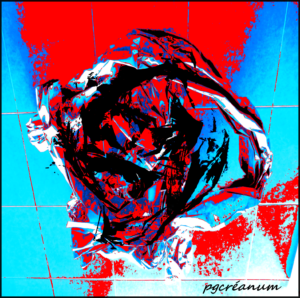
Here follows one of the emails Patrick Grisel sent me when we were discussing his blog post.
“Laurent….I forgot to tell you that in 2010 when I arrived in Le Poët Laval I soon felt the need to write. I had created a file containing all the poems my father had written between the age of 20 and 25. I decided to assemble both his and my own poems. That is when I started producing books on various topics: poems, local history, family archives. To date that amounts to 25 books and I continue to write practically every day. It has now become a pressing need, especially contemporary poetry that I discovered thanks to one of my neighbours (a well-known poetess) who also helps me. I am presently writing a new form of poetry called “reactive poetry.”
The mail was accompanied by the reproduction of one of his latest computer paintings. That in a nutshell is who Patrick Grisel is. The present blog post is mainly concerned with his graphic work and his computer paintings. But I was curious to know how and where it all began and the following is what he told me.
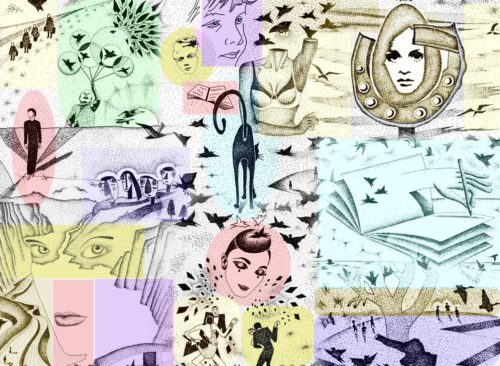
“Among many other artistic activities my father was an engineer as well as being a violinist, an inventor, a horseman, a painter and a fine draughtsman, and under his watchful eye he encouraged me to draw and to do creative manual work. At a young age I used to reproduce Walt Disney characters as well as making other drawings.
As I grew older, I was given a Meccano-kit with which I built cranes and cars, and trucks equipped with a little engine you wound up, and at thirteen I was making model boats that I launched on water and planes that flew in the air. When I was still in my teens, I discovered painting: Picasso, Utrillo, Bernard Buffet, Mathieu, Yves Klein, etc. At about the same time, I signed up for art school and for two years I attended drawing, painting and sculpture classes. Much later I took pottery, wood-sculpting courses that I found very interesting.
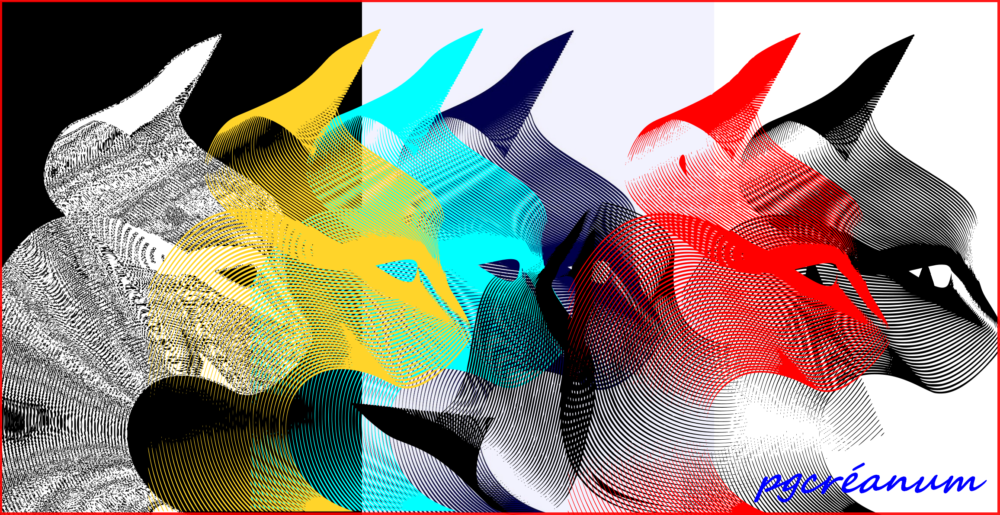
Following my technical and commercial higher education I created an engineering consultancy bureau with a friend and this involved projects that required lots of technical and industrial drawings. When I was about 40 years old, I felt the urge to express myself artistically. For a time, Vasarely, who initiated OP ART (optical art) inspired me and I immediately adopted his technique. Then came the Dutch artist Escher with his out of the world constructions who inspired and influenced me and led me to express myself by resorting to the stippling technique with Chinese ink. This affords a great deal of freedom as the drawing becomes a kind of continuum which allows you to stop, then begin again and modify to your heart’s delight. Finally, there was the digital revolution. Out went the drafting table; in came keyboards and screens, no more Chinese ink, eraser or squares. Everything I had done before was by no means lost as it formed a good basis on which to develop a method that makes it possible for me to experiment and carry out innovative applications as and when new software is made available. Retirement has given me the opportunity to engage in digital art and that is what I have enthusiastically been doing for quite some time, enjoying every minute and every day discovering new applications that I turn into works of art.
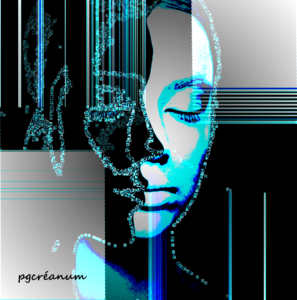 Patrick would not be Patrick if at the end of our talks he had not added: “And by the way, I have taken up my guitar again for I want to sing the songs of George Brassens with my grandson and let him hear the dummy of a CD of songs for which I wrote the text, composed the music and sang the lyrics. Laurent… you can see how I keep on creating things and I hope to do so for many years to come. “Non, je ne regrette rien…do-sol7-do-fa-sol7-do…!”
Patrick would not be Patrick if at the end of our talks he had not added: “And by the way, I have taken up my guitar again for I want to sing the songs of George Brassens with my grandson and let him hear the dummy of a CD of songs for which I wrote the text, composed the music and sang the lyrics. Laurent… you can see how I keep on creating things and I hope to do so for many years to come. “Non, je ne regrette rien…do-sol7-do-fa-sol7-do…!”
* Extract of a fable by Antoine Houdard de la Motte (1672-1731)
Posted in: Art
